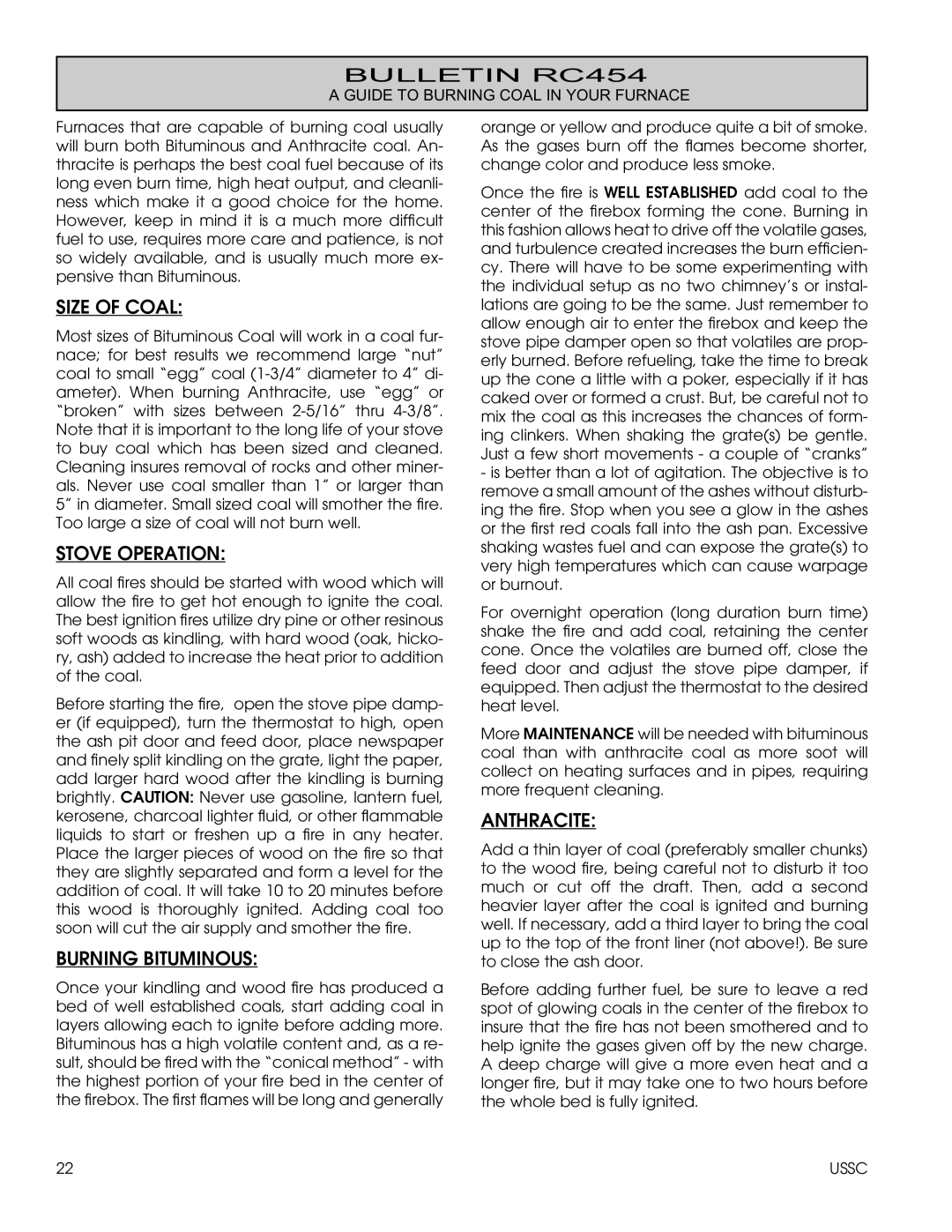1600EF specifications
The United States Stove 1600EF is a high-efficiency wood and biomass burning stove that stands out for its blend of traditional craftsmanship and modern technology. With a design that emphasizes functionality and aesthetics, the 1600EF is an excellent heating solution for those seeking both comfort and efficiency in their homes.One of the primary features of the 1600EF is its impressive thermal efficiency. Engineered to provide maximum heat output while minimizing emissions, this stove incorporates advanced combustion technology that allows it to burn firewood and various biomass fuels effectively. This not only helps in reducing pollutants but also ensures that you get the most out of each load of fuel, extending burn times and requiring fewer refills.
The construction of the United States Stove 1600EF is robust, featuring heavy-gauge steel that contributes to its durability and longevity. The stove is designed with a large firebox that can accommodate longer logs, enabling extended burns and less frequent trips to reload fuel. This is particularly beneficial for individuals who prefer less maintenance and more efficient heating.
Another key characteristic of the 1600EF is its versatility. It is suitable for various applications, including homes, cabins, and workshops. The stove is equipped with an adjustable air intake system that allows users to control the fire and heat output easily. This feature is particularly beneficial for achieving the desired temperature and ambiance in any setting.
Safety features are not overlooked in the design of the 1600EF. It comes with a built-in heat shield that helps protect surrounding surfaces from excessive heat, making it safer for placement in various locations. The glass door offers a mesmerizing view of the flames while ensuring that sparks and embers are contained within the unit.
The United States Stove 1600EF is also designed with user-friendliness in mind. It includes easy-to-access controls and a simple assembly process, ensuring that users can start enjoying the benefits of their new heating solution without hassle. Furthermore, troubleshooting and maintenance are made straightforward, contributing to a worry-free ownership experience.
In conclusion, the United States Stove 1600EF epitomizes the ideal combination of efficiency, safety, and aesthetics. With its advanced combustion technology, durable construction, and user-friendly design, it is an excellent choice for anyone looking to invest in a reliable and effective heating source. Whether for cozy winter nights or practical heating solutions, the 1600EF is a product that meets diverse needs with excellence.
